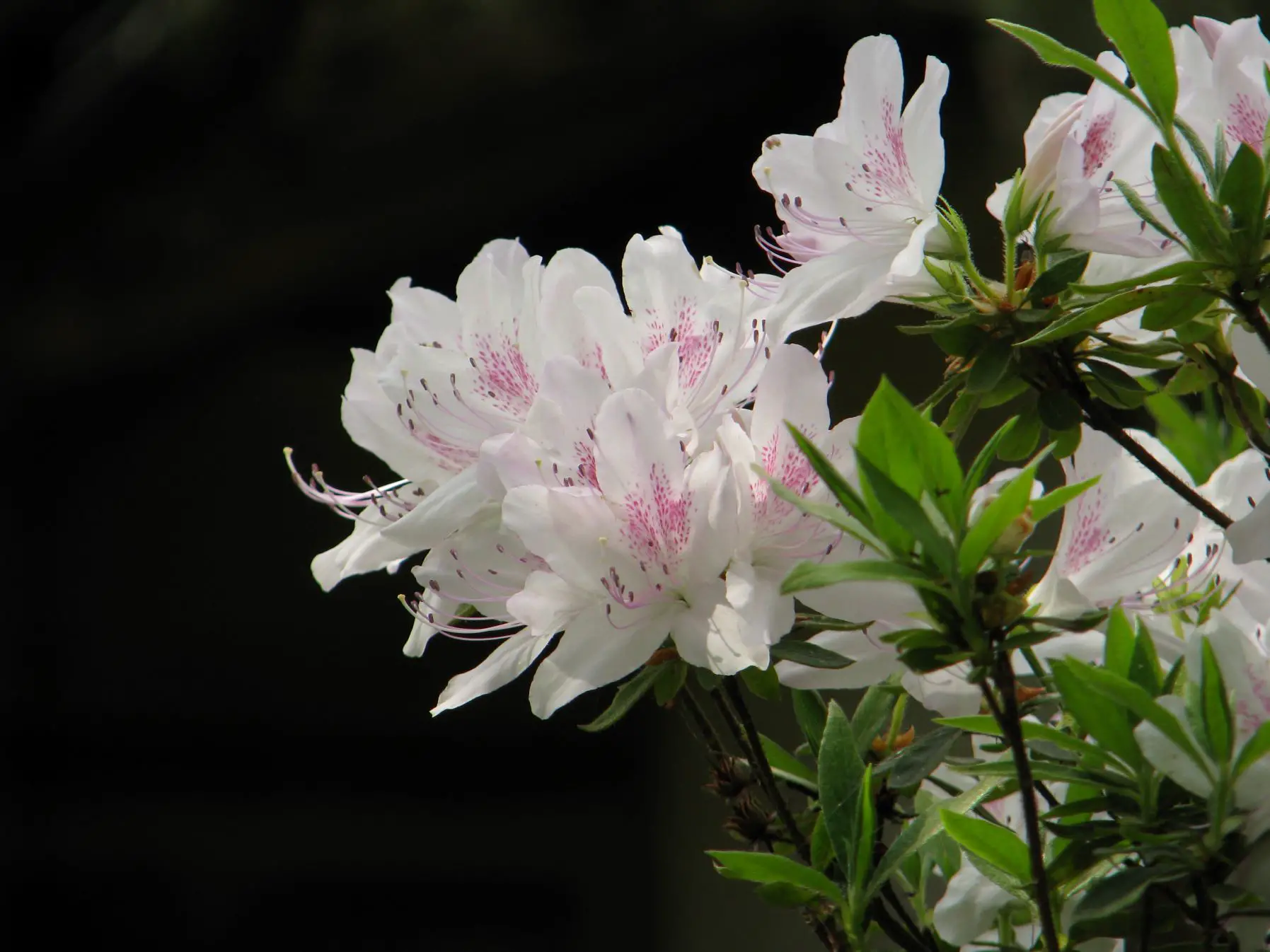Why isn’t your azalea bonsai blooming?
In this section, we will dive into the various reasons why your azalea bonsai may not be producing flowers despite being a healthy tree. These factors could range from environmental conditions to care-related aspects. Understanding the root causes is crucial to rectifying the blooming issue effectively.
Insufficient Sunlight
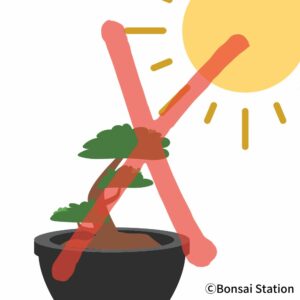
One of the primary reasons why your azalea bonsai is not blooming is due to insufficient sunlight. Azaleas are sun-loving trees: they require plenty of sunlight to trigger the blooming process. When they don’t receive enough sunlight, their ability to produce flowers can be adversely affected.
Azalea bonsai light needs
It’s crucial to provide your azalea bonsai with at least 5 hours of direct sunlight per day if you want it to have abundant flowering. It is true that azaleas are quite resilient and can tolerate less sunlight but they do need sufficient sunlight for a proper flower bud formation.
Signs of insufficient sunlight
- Long and weak stem growth with increased spacing between leaves
- Faded or yellowing foliage
- Overall weakened appearance
Improper Temperature

Temperature plays a significant role in flower formation as each species has an optimal temperature range for flower initiation and development. If your azalea bonsai is not blooming as expected, improper temperature conditions could be a contributing factor.
Azalea bonsai temperature needs
Common azalea species for bonsai cultivation such as Satsuki azalea, Miyama Kirishima azalea and Kurume azalea thrive in cool to moderate temperatures.
As such, temperatures between 59°F to 68°F (15°C to 20°C) are optimal for azalea flower bud initiation. For healthy bud development, the temperature needs to drop to around 50°F to 41°F (10°C to 5°C) in the later stage.
Deviations from this ideal range can affect their ability to produce flowers.
At bloom, the temperature needs to be around 68°F (20°C).
Signs of improper temperature
- Premature flower bud drop or failure of flower buds to develop fully
- Limited or no blooming despite adequate sunlight and care
Nutrient Excess/Deficiency
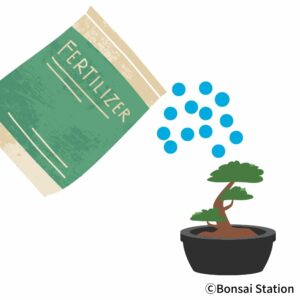
Nutrition is essential for the healthy growth and blooming of azalea bonsais. Azaleas have specific nutrient requirements, and any excess or lack of essential elements can hinder their blooming potential.
Azalea bonsai nutritional needs
All plants require essential nutrients such as nitrogen, phosphorus, and potassium. Of these, azalea bonsai have emphasized need for phosphorous; it is a critical nutrient for flowering and phosphorus deficiencies can cause limited flower development.
Excess nutrient
While P is important for flowering, it is the nitrogen level applied to the azalea bonsai tree that controls its transition from vegetative growth to reproductive growth.
Applying too much nitrogen or the presence of nitrogen in the soil at the time of flower bud initiation can disrupt the flowering process as the tree may prioritize vegetative growth and delay or inhibit the formation of flower buds.
Nutrient deficiency
It is important for azalea bonsai to accumulate carbohydrates to form abundant flower buds. For this, they need to have enough branches and leaves to produce energy that can well be assisted by well-balanced nutrition in the soil.
Any deficiency or lack of essential nutrients can hinder their blooming potential.
Pruning Mistakes
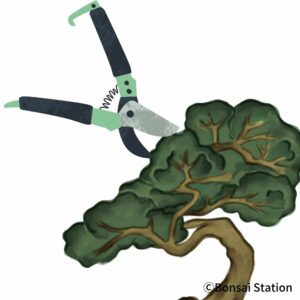
Pruning mistakes can have a significant impact on the flower production of your azalea bonsai. The most common pruning mistakes in azalea bonsai that interfere with blooming are pruning at inappropriate times and excessive pruning.
Pruning at the wrong time
Pruning at the wrong time of the year can negatively impact the next year’s bloom.
Generally speaking, pruning azalea bonsai 10 weeks after blooming and beyond will highly likely remove flower buds for the next season. Note that the flower bud formation of azaleas varies widely depending on the species as well as which part of the tree pruned.
Excessive pruning
While azaleas respond well to pruning in general, more flower buds are actually formed in cases where no pruning is performed compared to those with pruning. So, over-pruning can remove too many flower buds and new growth, reducing its capacity to bloom abundantly.
Incorrect Watering Practices
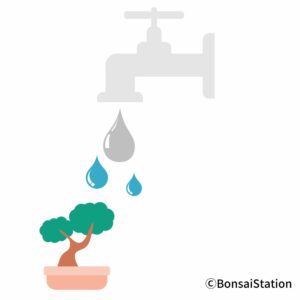
Watering is a fundamental aspect of azalea bonsai care, and improper watering practices can significantly impact their blooming potential.
Azalea bonsai watering needs
Azalea bonsai loves water and prefer a moist to a dry environment. That said, excess watering especially at the time of flower bud formation in summer can promote vegitative growth (i.e. leaf and stem) rather than flower buds.
In fact, mild drought stress at the flower bud initiation period can promote more numbers of flower buds, leading to higher blooming rates.
Pests

Pests and diseases can significantly impact the blooming capacity of your azalea bonsai. There are worms particularly infest in azalea bonsai that can reduce their ability to produce flowers: azalea caterpillar and azalea leafminer.
Azalea caterpillar
Azalea caterpillars (Datana major) are larvae of moths which are small green worms at a young state that grow into medium purple worms and then into large black- and yellow-striped worms with reddish heads and prolegs. The immature one is about 1/2 inch long and the mature one is about 2 inches long.
You can see the picture here from North Carolina State University Extension.
If undetected, azalea caterpillars can eat up all the leaves in a short time and the stress caused by defoliation by worms can reduce flowering the following spring.
Azalea caterpillars are found mainly in the southeastern states and along the East Coast like Florida, Georgia, South Carolina and North Carolina but not limited to warmer states.
Azalea leafminer
Azalea leafminers (Caloptilia azaleella) are larvae of moths that are originally from Japan but have been introduced worldwide, including in the US. They are yellowish in color and are about 0.5 inches long.
You can see the picture here from the University of Florida.
After hatching, the young caterpillar of azalea leafminer enters the leaf and starts feeding from inside the leaf, creating a blister. As it grows larger, it moves to the upper surface of the leaf and uses silk to pull the leaf over its body, chewing holes in the leaf.
Injured leaves usually turn yellow and drop. It is not that common but azalea leafminer can destroy entire foliage. The stress caused by defoliation from azalea leafminers can reduce flowering the following spring.
It is probably best if you understand what the flowering process is for bonsai trees and how it proceeds to identify the reason why your azalea bonsai isn’t flowering. For this, the following article may be helpful.
How to make azalea bonsai bloom
Provide optimal light conditions

Proper light exposure is crucial for encouraging blooming in your azalea bonsai. As sun-loving trees, azaleas require plenty of light to trigger the formation of flower buds and achieve a profusion of colorful blooms.
Azalea bonsai light needs
Azalea bonsai generally need at least 5 hours of sunlight per day, especially during summer. If you’re not seeing enough or any flowering this year, it may be due to insufficient sunlight during the critical period of flower bud formation: summer.
Azalea flower buds start appearing at the tips of the branches as early as June until August, right after they bloom. Carbohydrates that are produced through leaves are necessary for this flower bud formation. If the branches and leaves haven’t grown enough by summer, it will lead to the absence of good flower buds and insufficient flowering the following year.
So, your azalea bonsai needs to be placed in an area with sufficient sunlight for the branches and leaves to achieve their full potential which leads to abundant flowering. They need to accumulate enough carbohydrates produced by the leaves through photosynthesis during this crucial period.
If not, the formation of flower buds will suffer.
Filtered sunlight?
It is important to avoid shading the tree from sunlight during summer when the flower buds are formed. Your azalea bonsai can tolerate intense sunlight quite well as long as it is adequately watered.
With limited sunlight during this time, new shoots may elongate, causing the branches and leaves to grow rather weak, and ultimately affecting the formation of flower buds negatively.
That said, it’s best to avoid exposing your bonsai to strong and intense direct sunlight all day long if you live in a very hot and dry region. The tree may tolerate the heat but exposing it to strong sunlight all day can deplete the nutrients needed for flower bud formation.
In this case, I would recommend providing some shade, especially during the afternoon, to protect the tree’s energy reserves. You may place your tree under a big tree or beside a wall that can help achieve this effect. Or you can use a shade cloth (but remember not all day long).
Indoor Placement
The only option for indoor placement is to place them at and NOT NEAR the south or east-facing windows where your azalea bonsai receives at least 5 hours of sunlight. Artificial grow light may not be enough in terms of hours of light they receive during the day.
Also, for many plants, one of the key factors influencing flower bud initiation is the duration of light and darkness they receive within a 24-hour period. Azalea requires specific day/night lengths to initiate flower bud formation, which may be difficult to adjust using artificial grow light.
Maintaining the Right Temperature Range
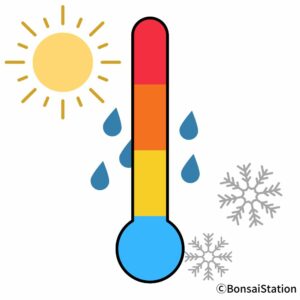
Temperature is a critical factor in the blooming success of your azalea bonsai. Maintaining the right temperature range is essential for promoting flower bud development and abundant blooms.
Azalea bonsai temperature needs
Temperatures between 59°F to 68°F (15°C to 20°C) are optimal for flower bud initiation. It depends on the species and cultivars of azalea but the development of flower buds are suppressed with temperature higher than 77°F (25°C), though buds may appear earlier/faster.
The optimum temperature range for azalea flower bud development is around 59°F to 68°F (15 to 20°C) during the early stage and may fall to around 50°F to 41°F (10°C to 5°C) in the later stage.
The ideal blooming flowering temperature is around 68°F (20°C).
Winter cold
A certain degree of low-temperature exposure in winter is necessary for normal flowering, while some azalea varieties show almost no requirement for these low temperatures.
During winter, their growth and blooming activity slow down or temporarily cease. This is a natural part of their life cycle and they resume as temperatures become more favorable in spring.
This really depends on species and cultivars of azalea but exposing your azalea bonsai to the cold temperatures is a good idea, especially considering they are very cold hardy in general.
Fertilizing for Blooms
Fertilizing plays a crucial role in supporting the blooming potential of your azalea bonsai. Providing the right nutrients at the appropriate times can encourage robust flower bud formation and enhance their blooming.
Choose the right fertilizer
All plants require essential nutrients such as nitrogen, phosphorus, and potassium. Of these three, azalea bonsai have emphasized need for phosphorous which is a critical nutrient for flowering.
You can choose a fertilizer specifically formulated for flowering bonsai trees such as azaleas. The following product from Amazon is a bonsai bloom fertilizer with an N-P-K ratio of 6-8-10 and contains essential micronutrients as well. It is slow-release which is ideal for bonsai trees.
You can also choose a balanced bonsai fertilizer that will give ideal growth for all bonsai trees including azalea bonsai trees. (N-P-K ratio is 12-11-10 for the following product.)
Schedule fertilizing
Pre-Blooming
Start fertilizing in early spring using fertilizer for bloom or a balanced fertilizer. Make sure that all or most of the nutrients are used up by the tree and no excess ones remain in the soil at the time of blooming.
Blooming Period
No fertilization is necessary during the blooming period. Excess nutrients may deform flower forms or affect their colors.
After blooming
Apply a balanced fertilizer once or twice. Make sure no excess nitrogen remains in the soil at the time of flower bud formation in summer.
Pruning for Flower Production
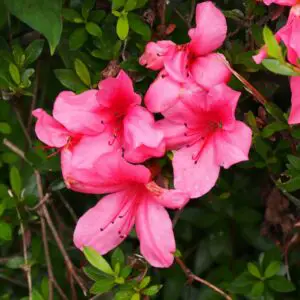
Satsuki azalea
Pruning is a vital technique for maximizing flower production in your azalea bonsai. Proper pruning enhances the tree’s overall health, directs energy toward flower development, and ensures an aesthetically pleasing display of blooms.
Timing for pruning
For optimal blooming, prune the branches that grew in the current year within 5 weeks of blooming to achieve the same or more blooms compared to the previous year. It may be delayed until 10 weeks after blooming for some species but again, it all depends on the type of azalea.
Pruning of branches from the previous years should be done immediately after flowering. Even if done at the proper time, flowers tend to be less if pruned.
Which branches to prune
The flower bud formation of azaleas is significantly influenced by whether they are pruned, where they are pruned as well as the species.
The flower buds are formed more in cases where no pruning is performed compared to those with pruning. So you should choose carefully which branches to prune off and avoid unnecessary cutting for optimal blooming.
Hard pruning of older branches should be done only when necessary. While pruning branches that have grown in the current year exhibit a better rate of bud formation, pruning those that grew in the previous years actually lessons flower buds.
Mastering Proper Watering Techniques
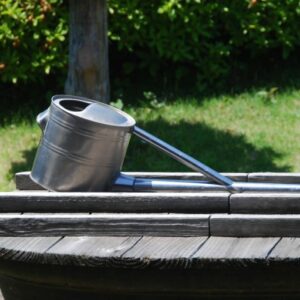
Watering is a critical aspect of azalea bonsai care, and mastering proper watering techniques is essential for encouraging blooming and maintaining the overall health of your bonsai.
Azalea bonsai watering needs
Azalea bonsai loves water and prefer a moist environment though it is quite drought resistant.
Watering frequency for abundant blooming
It is generally recommended to water azalea bonsai 2 to 3 times a day in summer when flower buds are formed. This, of course, depends on the climate (temperature, humidity, and wind) and has to be adjusted accordingly.
Remember that mild drought stress at the flower bud initiation period can promote more numbers of flower buds. Avoid keeping the soil consistently wet and water thoroughly when it is dry.
Managing in well-drained, well-aerated soil is a good practice for blooming.
Preventing and Addressing Pest and Disease Issues
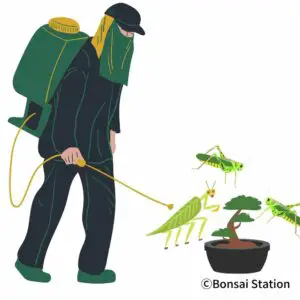
Preventing and addressing pest and disease issues is essential for maintaining the blooming potential and overall health of your azalea bonsai.
Preventative measures
- Check and monitor your trees: Regularly inspect your azalea bonsai for any signs of pests or diseases. Look at your trees from all directions so that you do not miss signs of infection.
- Provide proper care and environment: Make sure that the trees’ location and environment are good for them.
- Quarantine new trees: Quarantine new bonsai for a period of time.
Using chemicals for preventive measures is a good idea. If you are not sure about using synthetic pesticides, neem oil is a good choice. It does not do any harm to bonsai trees, unlike pesticides, and is environmentally friendly.
Addressing pest and disease issues
Here are 3 steps to get rid of bugs and diseases on your azalea bonsai trees:
-
- Identify bugs and diseases
- Use non-chemical options (manual removal)
- Use chemical options
Identification
Spider mites, aphids and mealybugs feed on azalea bonsai, causing stunted growth and leaf drop. Dieback, rust, gall and powdery mildew are the most common azalea diseases. For identification, please refer to the article on this site which shows common problems with bonsai with pictures.
Manual removal
For small and early infestations, remove pests or infested parts by hand or scissors. Make sure not to touch the insects or diseased parts directly because it can hurt you or further spread the disease.
Chemical options
Neem oil, derived from the seeds of the neem tree, is an insect repellent that has antifungal and antibacterial properties as well.
BioAdvanced 3-in-1 Insect, Disease & Mite Control
You can also choose synthetic chemical products like this that can control both insects and diseases effectively.
For azalea caterpillars, “Sevin Bug Killer” works well but a simpler and inexpensive way is to remove them by hand if you can. Azalea leafminers are difficult to control by chemicals as they are protected by leaf tissue. The best way is to remove the leaf altogether when it is infested.
For more information about how to prevent and address pests and diseases, the following article shows exactly how.
—–
References
内田, 均、萩原, 信弘、「ツツジ類における剪定・刈込み時期と花芽形成との関係について」、造園雑誌、1988、V52 N 5 P 91-96

